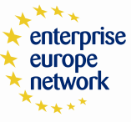A research group at the University of Alicante has recently developed the technology for the use of ultraviolet (UV) germicidal radiation in the disinfection of foods. Disinfection of liquid foods such as milk and fruit juices is usually carried out by means of thermal treatments or by using chemicals. The formers often induce changes in the organoleptic properties as well as in the nutrient value of the food whereas the latters may lead to the presence of non-desired by-products or residues in the treated products.
The developed technology is based on the irradiation of food, and food ingredients with UV radiation in the germicidal wavelength range (i.e. 200-300 nm) using low-cost instrumentation. This is a clean treatment that allows the elimination of pathogens present in food without comprising its quality. Researchers have been working with different UV sources and instrumental designs in order to optimize the results for different foods such as vegetable milks and grape juice.
The developed technology can be used to remove biological contamination in all stages of food production, from raw materials to the finished product and equipment and instrumentation used. To this end UV radiation of the germicidal wavelength range (i.e. 200-280 nm) is used.
This UV radiation is lethal to most types of microorganisms (bacteria, viruses, protozoa, moulds, yeasts and algae).
The irradiation of microorganisms produces a photochemical cross-linking of constituents of their DNA or RNA (especially thiamine or uracil bases) within the strains of DNA or RNA and with other constituent polymers such as proteins, leading to death or inactivation of the microorganism.
Technical issues are easily summarized. A source of UV germicidal radiation and an ad-hoc designed device to evenly distribute the radiation on the material to be disinfected are the only requirements.
An optimization of the operation conditions (such as time exposure and distance from the irradiation source) is usually needed in order to obtain the best results keeping the quality of the elaborated product at the highest level.
In addition, the researchers have developed this technique for disinfection of liquid foods as well as the surface of solid foods.
ADVANTAGES
• Low cost technology.
• Chemicals are not used and hence no chemical by-products are generated in the finished product.
• Disinfected materials are not heated.
• Uses non-ionizing radiation hence not residual radioactivity is delivered to the product.
• Effective to remove most microorganisms.
• Can be used for liquid and solid materials.
• Quality characteristics are preserved.
• UV-C radiation sources are easily available at a reduced cost.
• Light Emitting Diode (LED) technology can also be used with a considerable reduction of the environmental impact of the technique.
• Low energy needs.
• Combination with a less aggressive thermal treatment can be also easily implemented.
INNOVATIVE ASPECTS
• Non transparent liquid foods, having low UV radiation penetaration depth, are fully sterilized.
• It is an alternative to thermal processes because it provides similar results being less aggressive to the product characteristics.
• Superficial disinfection of solid surfaces can be accomplished.
• Low cost and effective technology.
• UV disinfection can be implemented anyway in the production process.
Results for liquids depend on the penetration of UV light and transparency of the fluid.
For solids, disinfection it is only superficial.
All types of food processing industry. In addition, this technology can be used in any process requiring a stage of microbiological disinfection such as in water treatment or in the sterilization of medical supplies.
Application of ultraviolet light can also be an alternative option to the usual use of sulphites for the control of microorganisms in wine production.
Rodriguez Roselló, Iván







